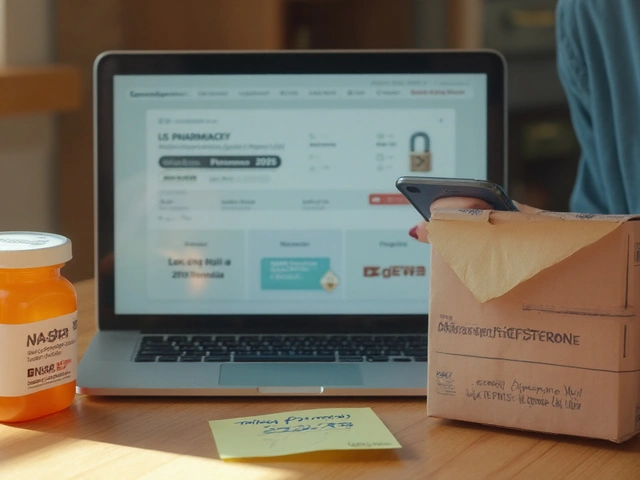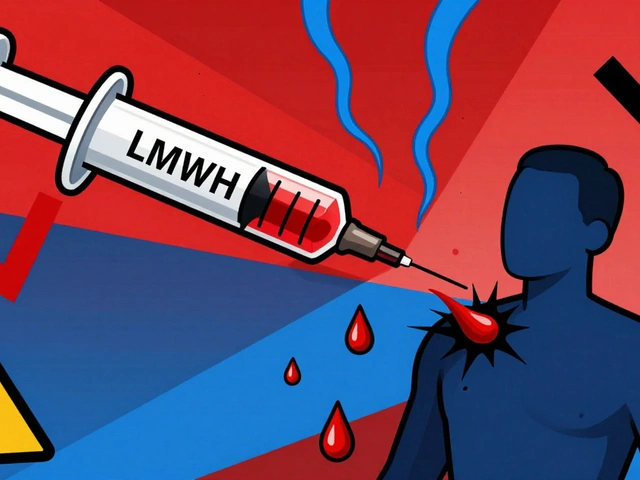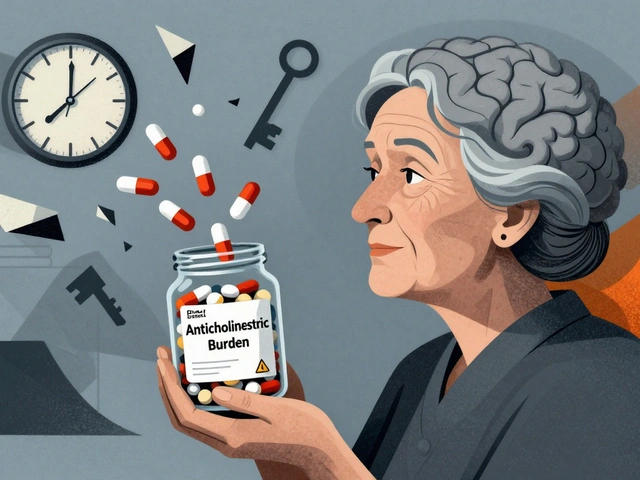When your stomach burns after eating, it’s easy to blame a spicy meal or too much coffee. But what if that acid indigestion isn’t just a harmless upset? Sometimes, the same burning sensation that feels like heartburn could be your body’s warning sign of something more serious-pancreatitis.
What acid indigestion really feels like
Acid indigestion, or dyspepsia, usually shows up as a burning feeling behind the breastbone, bloating, or a sense of fullness after eating small amounts. It often happens after fatty meals, alcohol, or lying down too soon after eating. Most people treat it with over-the-counter antacids and move on.
But here’s the catch: if your indigestion keeps coming back, gets worse at night, or starts spreading to your back, it’s not just stomach acid acting up. That pain isn’t always coming from your esophagus or stomach. It might be radiating from your pancreas.
What pancreatitis actually is
Pancreatitis is inflammation of the pancreas-a long, flat gland behind your stomach that makes digestive enzymes and insulin. Normally, these enzymes stay inactive until they reach your small intestine. But when they turn on early, inside the pancreas, they start digesting the organ itself. That’s when pain hits.
Acute pancreatitis can come on suddenly after a heavy meal or drinking. Chronic pancreatitis builds up over time, often from long-term alcohol use or gallstones. Either way, the pain isn’t just in your stomach. It’s deep, constant, and usually feels like it’s drilling through from your upper belly to your back. Many people mistake it for severe heartburn.
The link between stomach acid and pancreatic inflammation
Here’s what most people don’t realize: acid indigestion and pancreatitis don’t cause each other directly. But they’re connected through your digestive system’s chain reaction.
When you eat fatty or greasy food, your body signals the pancreas to release enzymes to break it down. If your gallbladder is blocked by stones-or if you’ve been drinking heavily-those enzymes get triggered too early. They start breaking down pancreatic tissue. That inflammation irritates nearby nerves, including those that also serve the stomach and esophagus.
So when you feel that burning sensation, it’s not necessarily acid reflux. It’s nerve pain from an inflamed pancreas misfiring signals to your brain. Your brain interprets it as heartburn because those nerves share pathways.
A 2023 study in the Journal of Gastroenterology found that 38% of patients later diagnosed with early-stage pancreatitis had been treated for ‘chronic acid reflux’ for months before their true diagnosis. Their symptoms didn’t improve with PPIs because the root cause wasn’t stomach acid-it was pancreatic inflammation.

Red flags that your indigestion might be pancreatitis
Not every case of acid indigestion is pancreatitis. But certain patterns should raise alarms:
- Pain that moves from your upper belly to your back
- Weight loss without trying, even if you’re eating normally
- Fatty, oily stools that float and smell terrible
- Nausea or vomiting that doesn’t go away after 24 hours
- Indigestion that doesn’t respond to antacids or proton pump inhibitors
If you’ve had recurring indigestion for more than three months and none of the usual remedies help, it’s time to get checked. A simple ultrasound or CT scan can show if your pancreas is swollen or damaged.
What happens if you ignore it
Pancreatitis doesn’t always scream for attention. In its early stages, it can feel like a bad case of indigestion that just won’t quit. People often delay care, thinking it’s ‘just stress’ or ‘old age.’
But untreated pancreatitis can lead to serious complications: pseudocysts (fluid-filled sacs), infection, diabetes (if insulin-producing cells are destroyed), or even organ failure. Chronic pancreatitis increases your risk of pancreatic cancer by up to 13 times over 20 years, according to the American Gastroenterological Association.
The longer you wait, the harder it becomes to reverse the damage. Early detection means less pain, fewer hospital visits, and better long-term outcomes.
What to do next
If you’re tired of treating your indigestion like it’s just heartburn, here’s what to do:
- Stop self-treating with antacids or PPIs if symptoms persist beyond two weeks.
- Track your symptoms: note when the pain happens, how long it lasts, and what you ate before it started.
- See a doctor and ask specifically about pancreatic health. Say: ‘I think this might be pancreatitis, not acid reflux.’
- Request imaging: an abdominal ultrasound or CT scan is the first step.
- Avoid alcohol and high-fat foods until you have a diagnosis.
Doctors don’t always test for pancreatitis unless you’re in severe pain. But if you’ve had persistent indigestion with no clear cause, you have the right to push for answers.
How to protect your pancreas long-term
Even if you’re not diagnosed with pancreatitis, you can reduce your risk:
- Limit alcohol: more than 3 drinks a day significantly raises your risk.
- Choose healthy fats: olive oil, nuts, and fish instead of fried foods and processed meats.
- Manage gallstones: if you’ve had them before, talk to your doctor about removal.
- Quit smoking: it’s a known trigger for chronic inflammation.
- Stay hydrated: dehydration can thicken pancreatic secretions and trigger blockages.
Your pancreas doesn’t complain until it’s in trouble. Learning to listen to your body’s subtle signals-like persistent indigestion-is one of the best things you can do for your long-term health.
Can acid reflux cause pancreatitis?
No, acid reflux doesn’t directly cause pancreatitis. But the symptoms can be very similar, leading to misdiagnosis. Pancreatitis causes pain that radiates to the back and doesn’t respond to antacids, while acid reflux usually improves with them. The confusion happens because both involve the upper digestive tract and share nerve pathways.
Is pancreatitis always painful?
Not always. Early or mild pancreatitis can feel like mild indigestion, bloating, or nausea. Some people with chronic pancreatitis have dull, constant discomfort rather than sharp pain. This is why it’s often missed-patients assume it’s just a sensitive stomach.
What tests diagnose pancreatitis?
Blood tests for elevated amylase and lipase enzymes are the first step. But imaging is key: an abdominal ultrasound can show gallstones or swelling, and a CT scan gives a detailed view of pancreatic damage. MRI with MRCP is used for complex cases to see the pancreatic ducts.
Can you have pancreatitis without knowing it?
Yes. Chronic pancreatitis can develop slowly over years with mild symptoms. Many people only discover it after complications arise-like diabetes, weight loss, or oily stools. If you’ve had unexplained digestive issues for months, don’t assume it’s just ‘bad digestion.’
Should I avoid all fats if I have acid indigestion?
No-but be smart. Healthy fats like avocado, nuts, and olive oil are fine. Avoid fried foods, butter-heavy meals, and processed snacks. The pancreas struggles to process large amounts of fat at once. If you notice pain after fatty meals, that’s a sign your pancreas is working too hard.
Final thought: Don’t ignore persistent indigestion
Indigestion is common. Pancreatitis is not. But they can look too much alike. If your stomach keeps burning, and nothing you do helps, it’s not just ‘bad luck.’ It could be your pancreas asking for help. Listening early could save you from serious health trouble down the road.






Wow, I’ve been ignoring this burning feeling for months-thought it was just my late-night tacos. But now that you mention the back pain and no relief from antacids… yeah, that’s me. Gonna book a doctor this week.
November 20Don Angel